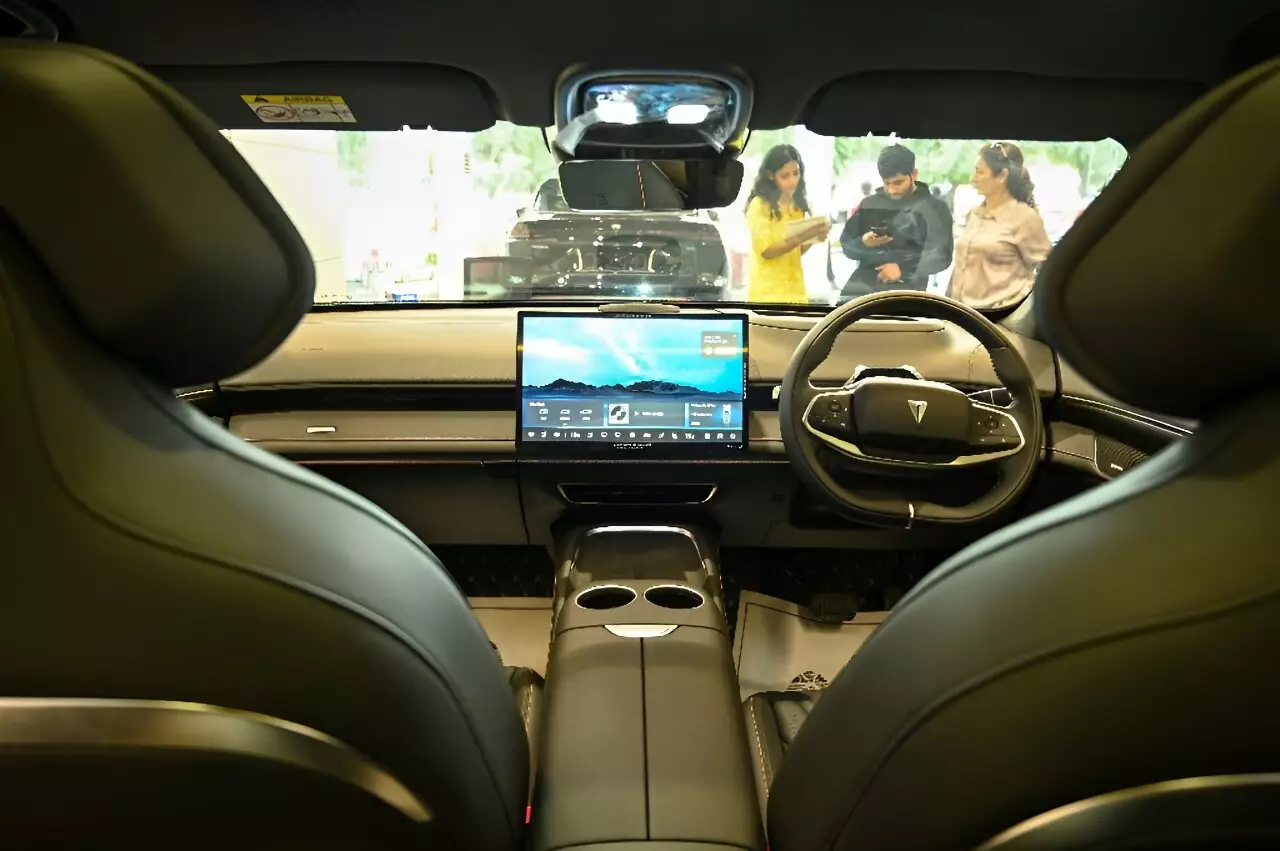Surendra Parajuli’s recent leap into the realm of electric vehicles (EVs) showcases a significant transformation in Nepal’s transportation landscape. Just a decade ago, this shift would have seemed nearly impossible due to the persistent power crises that plagued the nation, leaving many citizens in the dark. Today, however, a series of large-scale dam projects are reshaping Nepal’s energy sector, providing accessible and affordable electricity that is fueling the adoption of electric cabs like Parajuli’s Chinese-made BYD Atto 3. This vehicle offers him a range of 300 kilometers on a single charge while costing a mere fraction of the price of traditional petrol, reflecting significant savings and an environmentally friendly alternative.
Kathmandu is at the forefront of this transport revolution, where a shift from the country’s aging gasoline vehicles is becoming increasingly evident. With over 40,000 electric vehicles hitting the roads recently, the number, albeit small relative to the total of 6.2 million vehicles in the country, signals an alarming trend. As more than a quarter of the existing electric vehicles were introduced in just the last year alone, the enthusiasm for greener transport continues to surge, largely driven by imports from neighboring China, which has a domineering presence in the electric vehicle market.
The transformation of the energy landscape in Nepal is striking, particularly given historical data. At the start of the millennium, over 80% of the population was without electricity, presenting a bleak picture of energy access. Fast forward to today, and thanks to extensive investments in hydropower—a source that provides about 99% of the country’s baseload energy—Nepal has emerged as a burgeoning player in clean energy production. With hydropower output quadrupling within the last eight years, around 95% of citizens now enjoy electricity.
This newfound energy independence allows for not just local consumption but also positions Nepal as a potential energy exporter, largely to India, which continues to rely heavily on coal. Kulman Ghising of the Nepal Electricity Authority highlights that the transition to electric vehicles and the reduction of fossil fuel imports has saved the country approximately $224 million, emphasizing the economic viability of electric transport in Nepal’s context.
As road transport accounts for more than 5% of the country’s greenhouse gas emissions, the environmental necessity of a transition to electric vehicles cannot be overstated. The severe air pollution in Kathmandu, which has been labeled one of the world’s most polluted cities, creates an urgent need for change. Experts agree that promoting electric vehicles is a crucial strategy in mitigating air pollution and achieving Nepal’s ambitious climate goals, including a target to become a net-zero greenhouse gas emitter by 2045. The government aims for electric vehicles to make up 90% of all private vehicle purchases by the end of the decade, reinforcing a sustainable future.
Nonetheless, this transition has not been without its critics, and concerns regarding the broader ecological implications of rapid hydropower expansion have surfaced. Environmental activists warn that the need for new dams to support this electric revolution threatens sensitive ecosystems—including wildlife habitats and protected areas. Moreover, the increasing frequency of floods and landslides in the region, exacerbated by climate change, adds to the apprehension surrounding evolving energy infrastructures.
Challenges of E-Waste and Governance
Even as Nepal grapples with the burgeoning interest in electric vehicles, there lies a critical oversight regarding the management of electronic waste, particularly concerning lithium-ion batteries. With hazardous materials posing risks to both human health and the environment, the disposal and recycling of these batteries lack the necessary foresight from governmental bodies. Nabin Bikash Maharjan, of the recycling firm Blue Waste to Value, emphasizes the urgency for proactive policies on e-waste management. It is essential for Nepal to not only embrace the short-term benefits of electric vehicles but also to plan for the future implications of widespread adoption.
While the rise of electric vehicles in Nepal represents a monumental step towards sustainability and energy independence, it underscores the need for comprehensive planning and governance. Balancing environmental concerns, energy needs, and economic benefits will be crucial as Nepal navigates this transformative period. If managed effectively, the switch to electric mobility could herald a new era of ecological responsibility, ultimately leading Nepal towards a greener, more sustainable future.



Leave a Reply